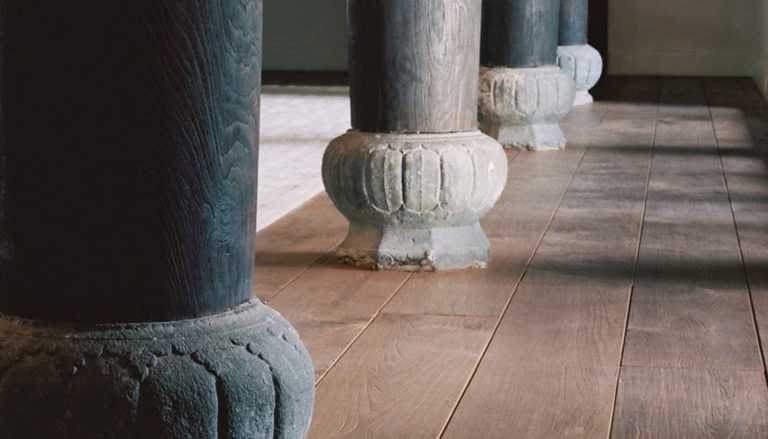THE ARCHITECTURAL AND PLANNING WORKS Ong-ard Satrabhandhu speak a language that has been officially declared dead and buried since the Second World War. It is a language that not only was struck from teaching curricula of universities, polytechnics, and tech schools but more tragically was branded worldwide, and in opposite ideological regimes, as dépassé, as anachronistic. Those who decided to practice it were, like Ong-ard, considered to be lingering outside the great streams of history, of evolution, of progress and what not.
In Satrabhandhu’s realizations architectural history, however, has taken an insolent course, namely one that was declared to be a-historic. The works stand as enchanting demonstrations of reality defeating rotten theory.
Ong-ard has realized private Oases not out of choice but because it is only in selective private spheres that authentic traditional architecture and aesthetics are competently practiced and safeguarded today. The beautiful illustrations in this tome prove that new buildings do speak live traditional idioms, a universal language of good building. It is still readily understood across borders and cultures, without explanation or translation by anyone who is free of ideological blindfolds. Traditional building languages do not die out of inner failure but because they stop being practiced. Not only do Ong-ard’s works bring to life a banned language but they speak it with superb mastery, with poetic élan. They represent a remarkable personal achievement at a time when clientele, building authorities, and industries are illiterate in traditional architectures. Worse, where required by pressing market demand, the latter are practiced at once massively and incompetently. In a culture where kitsch is norm, the authentic vernacular and classical creations of Ong-ard Satrabhandhu stand as vigorous, if lone way, signs to a civilized future.
Léon Krier

















